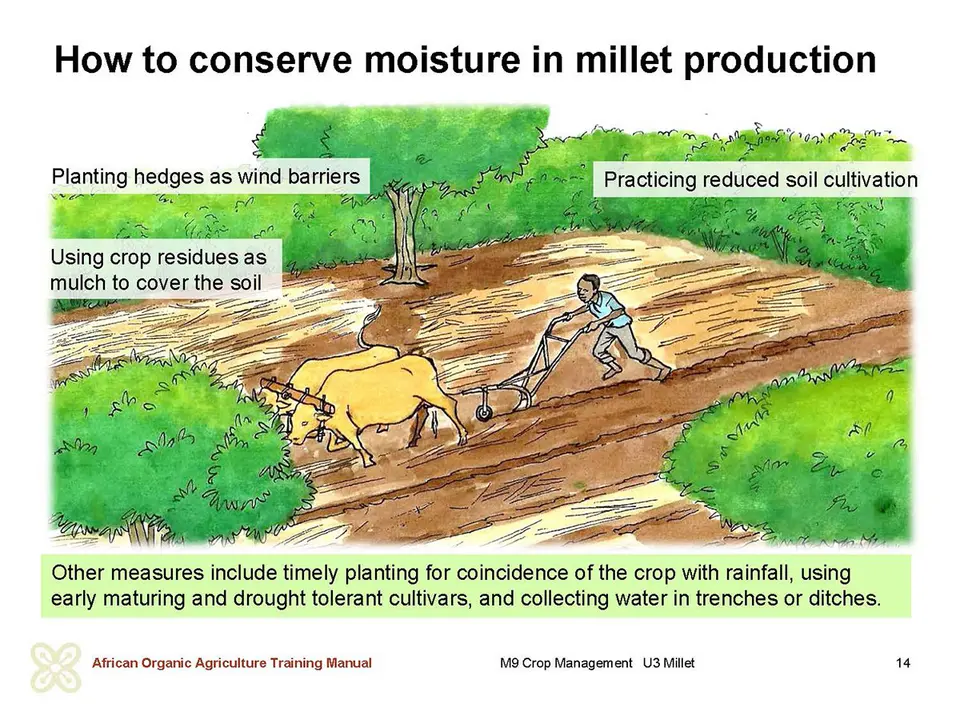Proper water management
In Africa, millet is commonly grown as a rainfed crop in dry climates. It is very drought resistant and under conditions of low soil-water the crop is generally more productive than sorghum. The soils in which millet is grown are generally sandy with low moisture holding capacity, and are generally deficient of organic matter. Although it tolerates low soil moisture conditions, millet responds very well to additional water supply through better water harvesting and conservation practices or irrigation thereby producing higher yields.
Evaporation from the soil surface constitutes a large proportion of evapotranspiration. Practical methods of reducing evaporation from soils to conserve water are very important in millet production. The use of crop residues as mulch or soil cover is one solution except where they are fed to livestock during the dry season, or consumed by termites. Early/timely planting is another important strategy to ensure that the growth pattern of the crop coincides with the rainfall pattern.
Millet needs little water after germination, a small amount as the leaves appear, and light rain during the growing period. Moisture stress during flowering through to grain formation reduces yields, as does heavy rainfall. During grain development hot and dry weather is needed.
Discussion on water management and irrigation
Ask the following questions to the farmers to inquire about their approach to water management in millet production:
- What do you do to conserve soil water for growth of millet? Which measures proved effective to reduce evaporation of water from soil?
- Do you irrigate your millet crops? If yes, how do you decide why and when to irrigate? Do you face any challenges in irrigation like availability of water, issues of water sharing, or quality of water?

 tap and then scroll down to the Add to Home Screen command.
tap and then scroll down to the Add to Home Screen command.